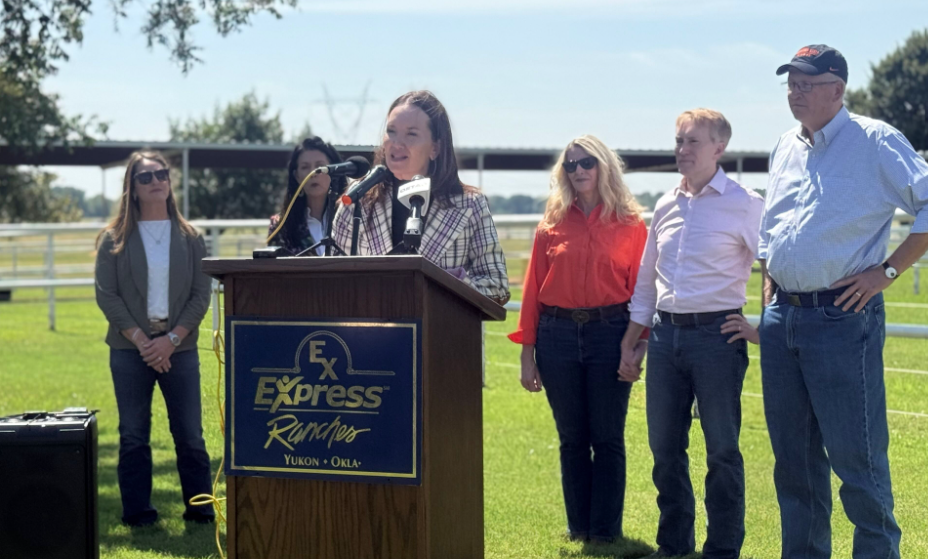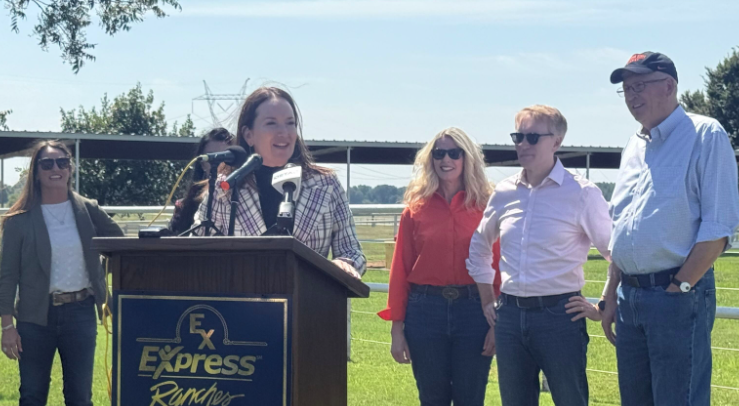
During a visit to Express Ranch in Oklahoma, Ag Secretary Brooke Rollins delivered a comprehensive address on the USDA’s efforts to defend American agriculture from what she called “threats.” She opened her remarks by acknowledging that American ranchers are “among the most resourceful and resilient individuals in our nation”. Her visit focused on the federal government’s response to the New World screwworm, which she described as a “worrisome threat”.
The parasitic fly larva, which can be deadly to livestock and other animals, has made a comeback in South and Central America. According to Rollins, a recent human case in Maryland involving an individual who had traveled from El Salvador served as “yet another flag” for why the USDA must take the threat seriously.
A Five-Point Plan for Eradication
Rollins detailed a strategic, five-point plan to combat the pest and protect the U.S. border:
- Strengthening U.S.-Mexico Collaboration: The USDA has established a comprehensive inspection and treatment protocol at the southern border. Rollins noted that the partnership with Mexico is “as strong and as transparent as it has been in decades”. She also credited the Mexican government for eliminating restrictions on aerial releases for suppression and waiving duties on eradication equipment.
- Bolstering Border Protection: In response to the northward spread of the pest, the USDA suspended all live imports of cattle, horses, and bison through southern U.S. ports in May. The USDA is expanding its use of “tick riders, who patrol the border on horseback,” as well as “detector dogs” to find potential infestations. Mexico has also agreed to “halt all animal movement in affected zones” within its borders to prevent the pest from reaching the U.S..
- Ensuring Food Supply Safety: The USDA is prepared for the “difficult reality” of an animal infection within the U.S. if it occurs. In August, the FDA issued an emergency use authorization for animal drugs, including ivermectin, to be used in feed supplies if necessary. The USDA has also confirmed that any affected carcasses will “not be approved for human food”.
- Building Domestic Production Facilities: A key to the long-term strategy is the sterile fly program, which renders screwworm larvae harmless. The USDA has invested $21 million to expand an existing facility in Mexico, and it has received approval to build a new domestic production facility in Edinburg, Texas. This facility, which will be built with up to $750 million in funding, will produce up to “300 million sterile flies per week”. Rollins said the U.S. facility will take “anywhere from 12 to 18 months” to complete.
- Innovating for the Future: The USDA is dedicating up to $100 million to invest in new technologies to accelerate research and ensure long-term eradication. The agency will host an innovation summit at the White House to bring together researchers and experts to advance the work.

The Agricultural Economy and a Call for Unity
Beyond the screwworm, Rollins addressed the current state of the agricultural economy, calling it a “perfect storm” for producers. She highlighted the rising costs and a collapse in export markets, particularly as China has put in “zero purchase orders” for key commodities. She stated that the USDA team is working on options that “need to be ready to roll out very soon” to address the trade deficit.
Finally, Rollins spoke about a recent act of political violence, describing it as “a time of real darkness in our country”. She shared a personal reflection on the death of Charlie Kirk and the need for “healthy discussions and discourses and disagreements” to prevent violence. She also noted that President Trump and his administration are “unequivocally dedicated and resolute” to putting America first and ensuring that “this sort of violence doesn’t ever happen to anyone again”.


















